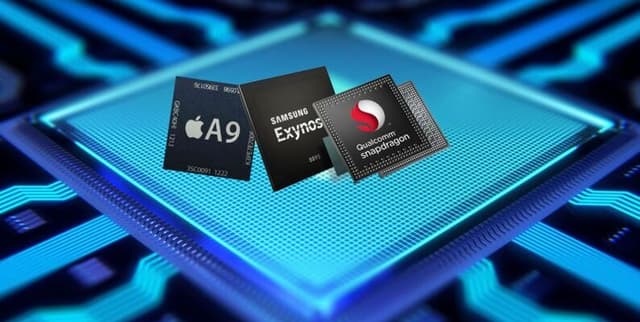Mobile Processor Performance Data
Product Reviews & Feedback
Tags and Keywords
Trusted By




"No reviews yet"
Free
About
Welcome to the ultimate Android vs iOS battle with this Smartphone System-on-Chip (SoC) dataset! This valuable resource offers an updated performance rating of smartphone SoCs as of 2022, providing a detailed comparison between Android and iOS devices [1]. It includes a summary of Geekbench 5 and AnTuTu v9 scores, alongside essential CPU specifications such as clock speed, core count, core configuration, and GPU details [1].
The dataset contains three distinct CSV files, each offering a unique perspective on smartphone performance. One file provides Geekbench ML Benchmark data, indicating how well each smartphone device performs when undertaking Machine Learning tasks. This data is gathered from user-submitted Geekbench ML results, ensuring accuracy by only including devices with at least five unique results [2]. Another file focuses on AnTuTu benchmarks, encompassing detailed scores for CPU, GPU, Memory (MEM), User Experience (UX), and an overall Total score [2]. These benchmarks are pivotal for easy comparison between multiple devices, scoring their performance on a standardised series of tests [1].
Columns
The dataset is structured across various files, with key columns offering insights into device performance:
- device: The name of the smartphone device, e.g., Samsung Galaxy S8, iPhone 13 Pro Max [3].
- company: The company manufacturing the SoC, such as Qualcomm or Apple [4].
- cpuName: The specific name of the SoC, e.g., Snapdragon 865 [4].
- cores: The number of cores in the CPU [4].
- clock: The clock speed of the CPU, measured in MHz [5].
- cpuScore: The central processing unit (CPU) score, reflecting how quickly a phone processes commands. It includes outputs from mathematical operations, common algorithms, and multi-core performance tests. A higher score suggests faster app execution, particularly for demanding applications [5, 6].
- gpuScore: The graphics processing unit (GPU) score, indicating a phone's ability to display 2D and 3D graphics. This score is derived from graphical components like Metal, OpenGL, or Vulkan. A higher score is beneficial for gaming and interface animations [7, 8].
- npuScore: The Neural Processing Unit (NPU) or Tensor Processing Unit (TPU) score [9].
- Total Score (AnTuTu): An overall numerical score representing the device's performance across all tests. This score is excellent for comparing different devices at a glance; for instance, a device with a score of 600,000 is approximately twice as fast as one scoring 300,000 [10].
- MEM Score (AnTuTu): The memory score, indicating the speed and capacity of a phone's memory. It includes results from RAM Access, ROM APP IO, ROM Sequential Read and Write, and ROM Random Access tests. Both RAM (working memory) and ROM (long-term storage) contribute to efficient task performance [11].
- UX Score (AnTuTu): The user experience score, an overall metric summarising the device's real-world "user experience". This score integrates results from data security, data processing, image processing, user experience, and video CTS and decode tests, offering a quick overview of overall performance [12].
Distribution
This dataset comprises three CSV files:
smartphone cpu_stats.csv, ML ALL_benchmarks.csv, and antutu android vs ios_v4.csv [1, 2]. The ML ALL_benchmarks.csv file contains 188 valid records [3]. Data files are typically in CSV format, with sample files updated separately [13].Usage
This dataset is ideally suited for various applications, including:
- Device Comparison: Easily compare performance across multiple smartphone devices [1].
- Purchase Decisions: Assist consumers in making informed decisions when buying a new phone or tablet [1].
- Performance Analysis: Evaluate the relative performance of specific device components, such as CPU, GPU, and memory [6, 7, 10, 11].
- Machine Learning Performance: Assess how well different smartphone devices handle Machine Learning tasks [2].
- Gaming Performance: Understand CPU and GPU capabilities for running demanding applications like high-end games [6, 7].
- User Experience Evaluation: Gain insight into a device's overall real-world user experience without delving into individual benchmark scores [12].
Coverage
The dataset provides updated performance ratings for smartphone SoCs as of 2022 [1]. The data primarily originates from user-submitted Geekbench ML results, specifically including devices that have accumulated at least five unique results in the Geekbench Browser to ensure accuracy [2]. No specific geographic or demographic scope is indicated within the provided information.
License
CC0: Public Domain
Who Can Use It
This dataset is beneficial for a wide range of users:
- Consumers: Individuals looking to compare smartphone performance before making a purchase [1].
- Technology Enthusiasts: Those interested in the technical specifications and performance metrics of smartphone processors.
- Researchers and Developers: Professionals analysing device capabilities for specific applications, especially in Machine Learning [2].
- Analysts: Individuals seeking to understand and compare the performance of different smartphone hardware components like CPU, GPU, and memory [6, 7, 10, 11].
- Marketplace Platforms: For listing and describing data products related to smartphone performance.
Dataset Name Suggestions
- Smartphone SoC Performance Rankings
- Android vs iOS Benchmark Scores
- Mobile Processor Performance Data
- Device CPU GPU Benchmarks 2022
- Smartphone Hardware Performance Dataset
Attributes
Original Data Source: Mobile Processor Performance Data
Loading...
Free
Download Dataset in ZIP Format
Recommended Datasets
Loading recommendations...
